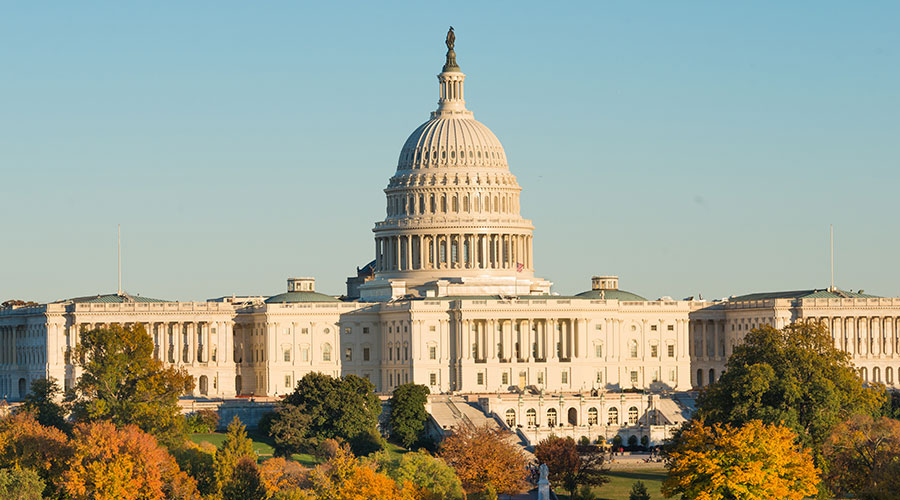'22 will be better than '21, finance and leasing execs say
2/22/2022
The rail equipment markets will be better in a variety of contexts this year — “better” as in better than they were last year — if sentiments expressed in an informal survey we conducted last month of North American rail finance and leasing execs (and other market observers) are any indication.
In general, equipment demand will be up and (some) rates should rise as segments of the economy continue to adapt with supply chain issues in the no-longer-new COVID normal, said respondents to the survey, which was conducted as part of the information gathering for our 22nd annual Finance & Leasing Guide. The guide was published in the February print edition of Progressive Railroading.
Not that there aren’t issues to contend with — continued supply chain congestion and its economic ramifications, labor shortages and potential interest rate increases among them. But just about everybody we heard from expects 2022 to be better, businesswise, than 2021.
Here's a sampling of their responses:
From a business perspective, will 2022 be better than 2021? Worse? Same? Why?
Tina Beckberger, senior vice president of leasing, SMBC Rail Services LLC: Demand continues to improve and expected to drive rail-car demand. Pressure continues to impact the global supply chain with availability of existing rail cars becoming tight. New car production backlogs also increasing with deliveries starting to extend to 2023 for some freight car types.
Joe Devoe, senior vice president, Helaba (Landesbank Hessen-Thüringen) New York Branch: Better. Business volume seems to be taking rail cars out of storage and the next step. Generally, [lease rates are rising], which increases portfolio cash flows and therefore asset values.
Sean Hankinson, chief commercial officer, American Industrial Transport Inc. (AITX): For American Industrial Transport, 2022 will be better for three reasons:
• Expected rail loading is up significantly over 2020 and 2021 which should cause lease rates to increase. Add this to the fact that we are seeing strong industrial rail transport trends across specialty chemicals, energy, food grade and grain products. We expect utilization rates to continue to be strong as shippers look to full-service partners to manage their investment and car maintenance and repair, so they can focus both capital and resources on growing their core businesses.
• In 2021, AITX grew our fleet in both size and breadth, where AITX and our affiliates manage over 60,000 cars across covered hoppers, hoppers, gondolas, tanks and specialty freight (box cars, centerbeams, flat cars). …
• With our August 2021 acquisition of The Andersons’ leasing business, AITX continues to bolster our talent with two headquarters in Maumee, Ohio, and St. Charles, Missouri. …
Richard Kloster, founder, Integrity Rail Partners Inc.: The rail equipment markets will definitely be better in 2022 versus last year on many fronts. New car deliveries will be higher. Retirements will remain strong. Utilization rates will improve. Availability will continue to tighten, even for some of the more “challenged” car types. Most importantly, lease rates and returns will strengthen.
Hugh Nicholson, executive vice president of marketing, sales and quality, National Steelcar Ltd.: Better — order volumes for new cars and production rates should be higher than in 2021.
Bill Rennicke, partner, Oliver Wyman: Better — the economy is learning to live with COVID.
Russ Warren, Managing Director, EdgePoint Capital Advisors LLC: Modestly better than 2022 (e.g., 40,000 cars) as freight traffic continues to increase when jams in ports and on ships clear somewhat. Passenger rail and transit should start to benefit from orders resulting from massive government infrastructure spending.
What is the key issue facing the rail finance/leasing sector in 2022? Why?
Beckberger: COVID continuing to impact the supply chain as it relates to labor, material availability and shop cycle time. Widespread labor shortages at ports, trucking and throughout transportation industry will continue to impact railroad service and velocity. Rising rail-car costs due to steel escalations and material price increases will continue to drive pricing.
Devoe: I continue to believe that as more railroads turn the focus from PSR to the revenue line and go after more freight from more shippers the demand for service, rail-car assets, lease rates, etc., will trend positive. The focus on green modes of transport also is well aligned with rail as a transport mode which should, if the effort is made, yield a better growth story for rail as a mode of transportation competing with trucks, in particular.
Hankinson: We see the key issues with leasing as new car pricing. The price increase for new cars is not supported by current lease rates which is good for leasing companies with a wide breadth of fleet portfolio and a strong contribution in older assets.
Kloster: Two things. Freight volumes need to keep improving to improve overall fleet utilization and drive demand. Lease rates need to improve to drive reinvestment and modernization in the fleet. Also, (third thing) hopefully the railroads professed “pivot to growth” will actually materialize.
Nicholson: Supply challenges are likely to continue as a result of worldwide COVID challenges and labor disruptions during at least the first half of the year.
Rennicke: The unexpected speed in the downturn in demand for some equipment types. Recent slowdown in car loadings.
Warren: Supply chain issues and a likely increase in the interest rate.
— Pat Foran, Editor

